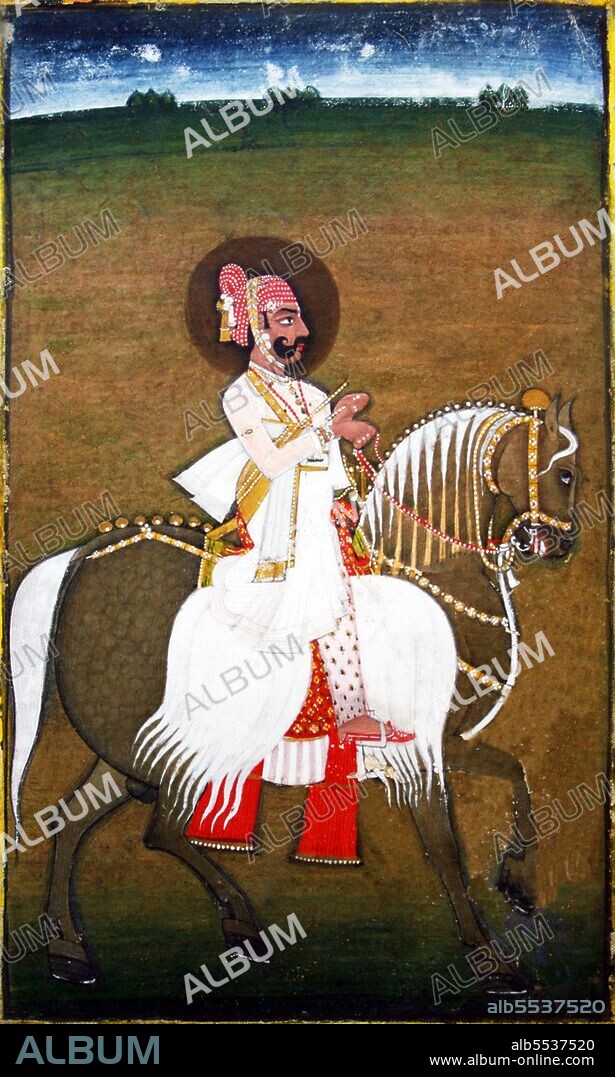alb5537520
India: Ruler or prince on horseback, Tonk, Rajasthan, late 18th century.

|
Ajouter à une autre Lightbox |
|
Ajouter à une autre Lightbox |



Avez-vous déjà un compte? S'identifier
Vous n'avez pas de compte ? S'inscrire
Acheter cette image.
Sélectionnez l'usage:

Titre:
India: Ruler or prince on horseback, Tonk, Rajasthan, late 18th century.
Légende:
Voir la traduction automatique
Tonk was a Princely State of India which by treaty in 1817 accepted British suzerainty. Following the Partition of India in 1947, Tonk acceded to the newly independent Union of India. It was located in the region that is now the Tonk district. The founder of the state was Muhammad Amir Khan (1768-1834), an adventurer and military leader of Afghan descent. In 1817, upon submitting to the British East India Company, he received the territory of Tonk and the title of Nawab. While retaining internal autonomy and remaining outside British India, the state came under the supervision of the Rajputana Agency and consisted of six isolated districts. Three of these were under the Rajputana Agency, namely, Tonk, Aligarh (formerly Rampura) and Nimbahera. The other three, Chhabra, Pirawa and Sironj were in the Central India Agency. The total area of the princely state was 2553 sq. mi, with a total population in 1901 of 273,201. The town of Tonk, capital of the state, had a population of 38,759 in that year. The town was surrounded by a wall and boasted a mud fort. It had a high school, the Walter hospital for women, under a matron, and a separate hospital for men. The princely state enjoyed an estimated revenue of £77,000; however, no tribute was payable to the government of British India. Grain, cotton, opium and hides were the chief products and exports of the state. Two of the outlying tracts of the state were served by two different railways.
Crédit:
Album / Pictures from History/Universal Images Group
Autorisations:
Modèle: Non - Propriété: Non
Questions sur les droits?
Questions sur les droits?
Taille de l'image:
3063 x 5100 px | 44.7 MB
Taille d'impression:
25.9 x 43.2 cm | 10.2 x 17.0 in (300 dpi)
 Pinterest
Pinterest Twitter
Twitter Facebook
Facebook Copier le lien
Copier le lien Email
Email
